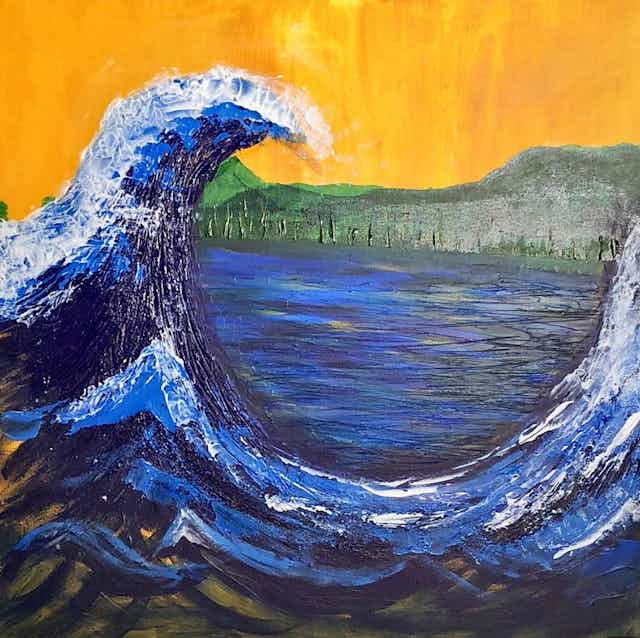The Junction of National Politics and Aesthetics in Trump Art
The Junction of National Politics and Aesthetics in Trump Art
Blog Article
Looking Into the Diverse World of Artistic Expression: From Surrealism to Abstract Realistic Look
In the world of imaginative expression, from the dreamlike landscapes of surrealism to the elaborate play of light and type in abstract realistic look, musicians have continuously pushed the borders of creative thinking and imagination. As we check out the complex globe of art, we are presented with a tapestry of styles, techniques, and approaches that test our understanding and prompt reflection.
Surrealism: Unleashing the Subconscious
Surrealism, an avant-garde creative motion of the 20th century, looked into the midsts of the subconscious, unveiling a world of dream-like images and non-traditional associations. Pioneered by artists like Salvador Dali, René Magritte, and Joan Miró, Surrealism sought to test the conventional methods of comprehending and seeing art. With strategies such as automatism and desire analysis, Surrealist artists aimed to tap right into the subconscious mind to expose surprise truths and wishes.
Among the essential components of Surrealism was the emphasis on the irrational and the uncanny. By combining unanticipated aspects in their jobs, Surrealist musicians intended to create a sense of disorientation and surprise in the viewer. This disruption of logic and factor was suggested to prompt a deeper expedition of the subconscious and the mysteries of the human subconscious.
Abstract Realistic Look: Redefining Understanding
Challenging standard creative boundaries, Abstract Realistic look redefines understanding with the fusion of well-known components with abstract types. This ingenious method to art combines the representational precision of realism with the creative liberty of abstraction, providing viewers an unique aesthetic experience that triggers them to examine their understanding of reality.
In Abstract Realistic look, artists strive to catch the essence of their topics while likewise infusing their deal with a sense of deepness and intricacy through abstract components. By mixing the aware of the strange, these musicians invite target markets to engage with their pieces on numerous degrees, encouraging them to explore the subtleties of texture, form, and color.

Cubism: Fragmenting Truth
Utilizing geometric types and fragmented perspectives, Cubism reinvented the imaginative depiction of reality in the early 20th century. Developed by Pablo Picasso and Georges Braque, Cubism looked for to challenge standard ideas of point of view and depiction. By damaging down items and numbers into geometric forms and offering them from multiple perspectives all at once, Cubist artists aimed to capture the essence of the subject as opposed to its actual look. This approach not only deconstructed truth yet additionally emphasized the flatness of the canvas, paving the method for future abstract art activities.

Cubism can be categorized into 2 main stages: Analytical Cubism, defined by monochromatic color pattern and elaborate, fragmented kinds; and Synthetic Cubism, which incorporated collage aspects and brighter shades visit this page right into the make-ups. With these unique phases, Cubism influenced not only painting but additionally design, sculpture, and style. trump art. Its effect reverberated throughout the art globe, motivating artists to explore brand-new means of standing for the globe and translating around them
Expressionism: Emotions on Canvas
Checking out the midsts of human feelings through dazzling and expressive brushstrokes, Expressionism became an extensive creative activity in the early 20th century. Unlike previous art movements that concentrated on portraying the exterior world, Expressionism explored the inner realm of the musician's psyche, intending to evoke raw feelings and provoke natural feedbacks from visitors.
Expressionist artists, such as Edvard Munch, Egon Schiele, and Emil Nolde, denied conventional ideas of charm and realistic look for misshaping kind and color to share subjective feelings. The use of overstated brushwork, bold shades, and altered figures assisted develop a sense of worry, alienation, or passion in their works.
Among one of the most well-known instances of Expressionism is Munch's "The Scream," which captures YOURURL.com the intense anxiousness and despair of contemporary life via its swirling, distorted number versus a blood-red sky. With their psychologically charged works, Expressionist musicians sought to challenge standard artistic standards and offer a home window right into the rough depths of the human heart.
Contemporary Art: Evolving Perspectives

One of the specifying qualities of modern art is its consistent development and capacity to adapt to altering social landscapes. Musicians are increasingly integrating technology into their method, obscuring the lines between the digital and physical realms. This blend of tools enables for innovative ways of storytelling and involving with audiences in a much more interactive way.
In addition, modern art commonly functions as a system for social commentary, dealing with pressing problems such as identification, national politics, and the environment. Artists are using their work to provoke and spark important conversations thought, clarifying the intricacies of the globe we stay in. As viewpoints remain to advance, modern art continues to be a prominent and dynamic force in forming our social landscape.
Final Thought
In final thought, the world of artistic expression incorporates a vast array of movements and designs, each with its very own distinct method to conveying definition and feeling. From surrealism's exploration of the subconscious to abstract realism's redefining of assumption, and from cubism's fragmentation of truth to expressionism's portrayal of emotions, art remains to develop and test point of views - trump art. Contemporary art reflects the ever-changing globe we reside in, providing new means to translate and understand the intricacies of our reality
As we discover the diverse world of art, we are offered with a tapestry of styles, techniques, and ideologies that test our understanding and provoke reflection. Its effect reverberated throughout the art world, motivating artists to explore new ways of representing the globe and translating around them.

Report this page